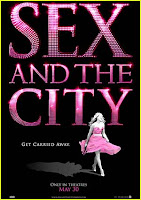Definitions
Typography
The technique of arranging a type and font to make the written words easy to read and appealing to the viewers.
Tag Line
A small amount of text or a slogan which is placed on the film posters for dramatic effect. The tag line is an important element of a film as it makes it memorable and recognisable to the viewer’s due to its famous line. Here are some examples of famous tag lines :
Psycho “Check in. Unpack. Relax. Take a shower”
Alien “In space no one can hear you scream”
The Truman Show “On the air. Unaware”
Technical codes
Codes are created by using a series of signs to create a story in a media text.
Iconography
The use of visual images and symbols to represent something or someone.
Levi Strauss
 Claude Levi Strauss was a French anthropologist born on the 28th November 1908 in Brussels, Belgium to the 30th October, 2009 in Paris, France. Strauss had an interest in national myths and legends where his studies revealed to him that humans make sense of the events and people by using binary opposites. Binary opposites are a pair of related concepts that are completely contradictory in meaning.
Claude Levi Strauss was a French anthropologist born on the 28th November 1908 in Brussels, Belgium to the 30th October, 2009 in Paris, France. Strauss had an interest in national myths and legends where his studies revealed to him that humans make sense of the events and people by using binary opposites. Binary opposites are a pair of related concepts that are completely contradictory in meaning.
Claude Levi Strauss realised that Conflict is based around the binary opposites and that the binary opposites are the central climax of a narrative structure.
Examples of Binary Opposites :
- Good vs Evil
- Black vs White
- Boys vs Girls
- Young vs Old
- Protagonist vs Antagonist
- Man vs Woman
- Beautiful vs Ugly
- Hero vs Villain
Roland Barthes
 Roland Barthes was born on the 12 November, 1915 and died at the age of 64 on the 25th March, 1980. Barthes was a French literary theorist, philosopher, linguist, critic and semiotician. With the help of Levi Strauss they discovered that the way a human understands certain words does not necessarily depend on the meaning they associate with it. Instead it’s related to our understanding of the difference between the word and its ‘opposite’ or in other words ‘Binary Opposites” realising that words acted as a symbols for societies ideas. Roland Barthes developed two important influential theories one of which was the theory of good vs evil, the other being the narrative theory of enigma.
Roland Barthes was born on the 12 November, 1915 and died at the age of 64 on the 25th March, 1980. Barthes was a French literary theorist, philosopher, linguist, critic and semiotician. With the help of Levi Strauss they discovered that the way a human understands certain words does not necessarily depend on the meaning they associate with it. Instead it’s related to our understanding of the difference between the word and its ‘opposite’ or in other words ‘Binary Opposites” realising that words acted as a symbols for societies ideas. Roland Barthes developed two important influential theories one of which was the theory of good vs evil, the other being the narrative theory of enigma.
Roland Barthes described a sentence or a word as “a galaxy of signifiers, not a structure of signifieds; it has no beginning; it is reversible; we gain access to it by several entrances, none of which can be authoritatively declared to be the main one; the odes it mobilises extend as far as the eye can read, they are indeterminable.. the systems of meaning can take over this absolutely plural text, but their number is never closed, based as it is on the infinity of language”. What Roland meant by this is that a text is like a tangled ball of threads that need to be unravelled, once they are unraveled the reader will encounter an absolute wide range of potential meanings. From one viewpoint you will would start looking a the narrative from one perspective perhaps from the readers past experience or belief about a particular subject and then develop a meaning for what they just read. Once you have done this, you can continue to unravel the text from another angle and aspect creating an entirely different meaning.






No comments:
Post a Comment